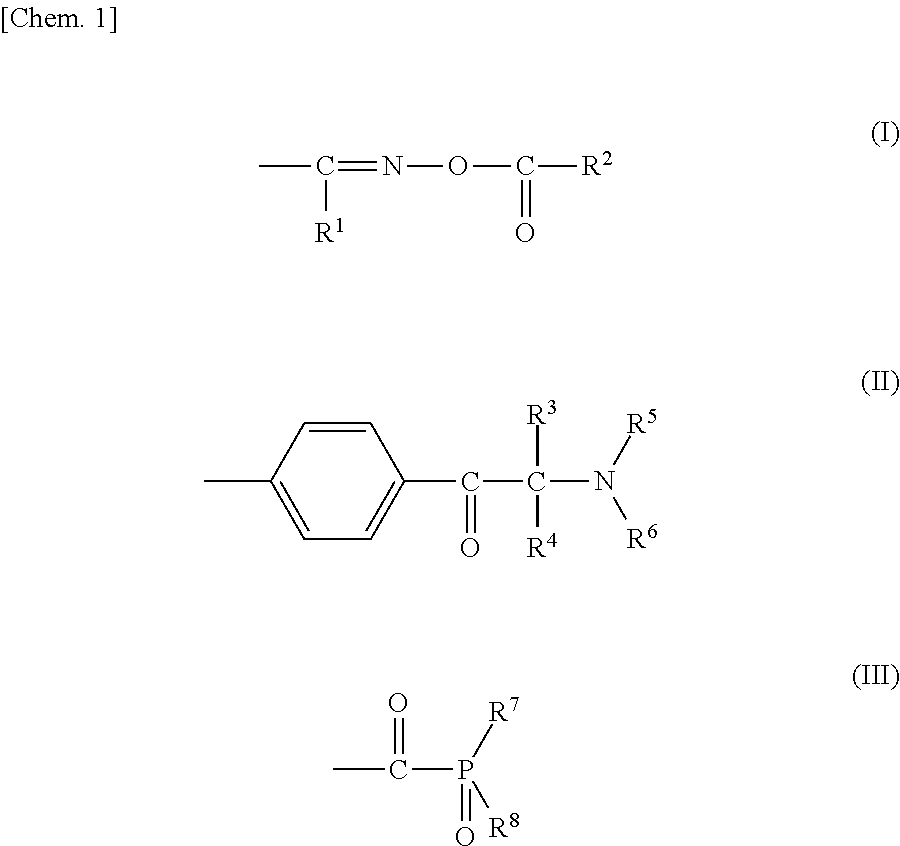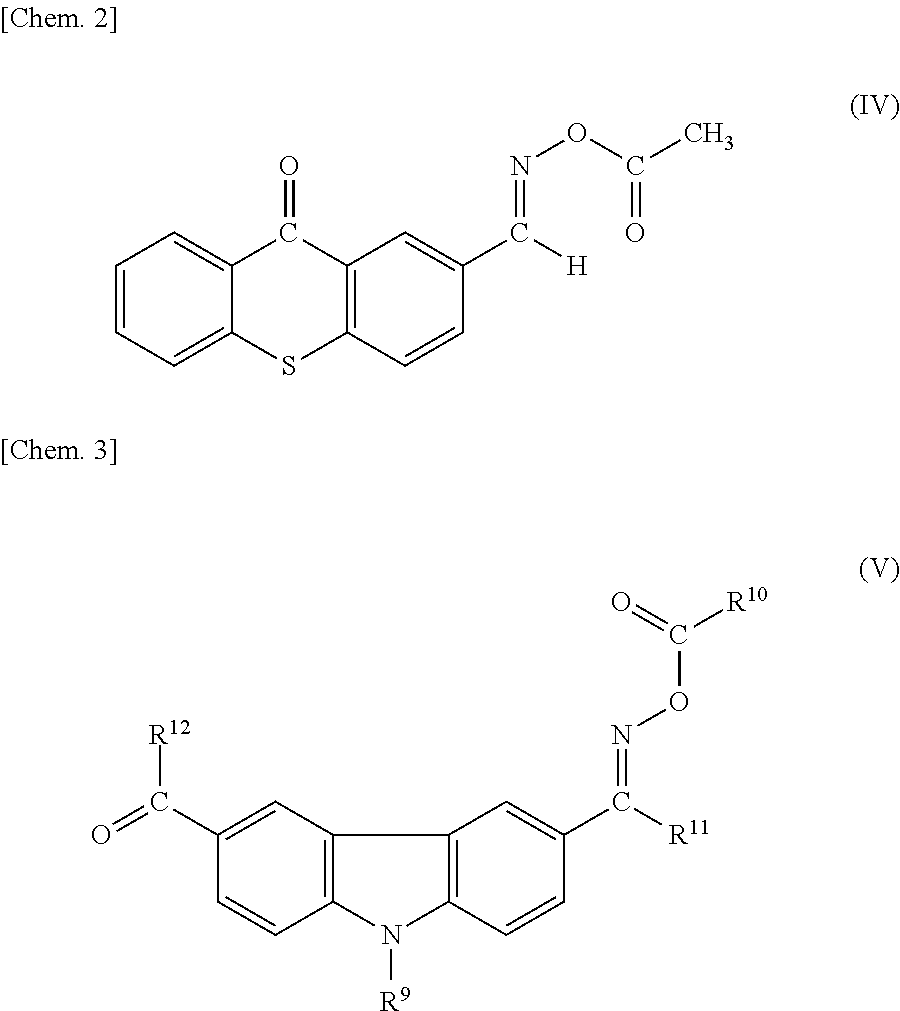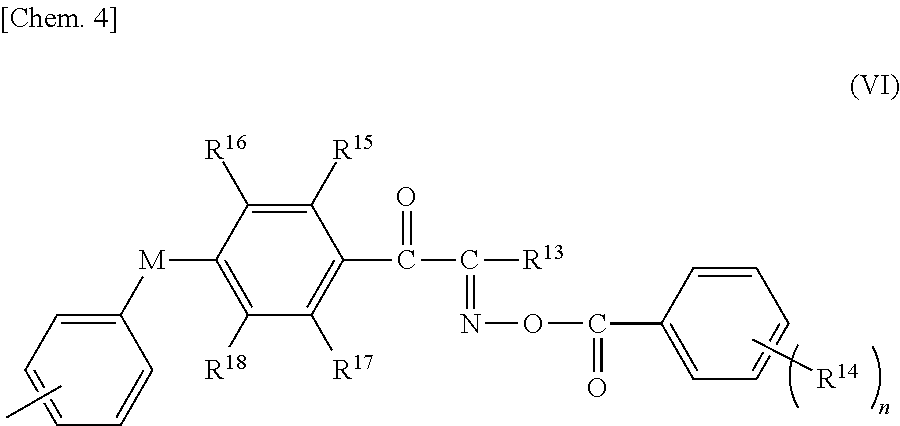Curable resin composition
a technology of resin composition and cure resin, applied in the direction of resistive material coating, metallic material coating process, pretreatment surface, etc., can solve the problems of excessive attack by aqueous alkali solution, undercutting in a desired fine pattern, and reducing productivity, so as to suppress the generation of development residue, improve the developmentability of through holes, and achieve satisfactory heat resistance and hardness. , the effect of improving the hardness
- Summary
- Abstract
- Description
- Claims
- Application Information
AI Technical Summary
Benefits of technology
Problems solved by technology
Method used
Image
Examples
synthesis example 1
of Carboxyl Group-Containing Resin
[0170]A 2-liter separable flask equipped with a stirrer, a thermometer, a reflux condenser, a dropping funnel and a nitrogen inlet tube was charged with 660 g of a cresol novolac type epoxy resin (EOCN-104S, softening point: 92° C., epoxy equivalent: 220, produced by Nippon Kayaku Co., Ltd.), 421.3 g of carbitol acetate, and 180.6 g of solvent naphtha, and the mixture was heated and dissolved at 90° C. under stirring.
[0171]Subsequently, the resultant was cooled once to 60° C., then 216 g of acrylic acid, 4.0 g of triphenylphosphine, and 1.3 g of methylhydroquinone were added thereto, and the mixture was allowed to react at 100° C. for 12 hours, so that a reaction product having an acid value of 0.2 mg KOH / g was obtained. To the product was added 241.7g of tetrahydrophthalic anhydride, and then it was heated to 90° C. and allowed to react for 6 hours.
[0172]Thus, a solution having a solid concentration of 65% of a photosensitive carboxyl group-contain...
synthesis example 2
of Carboxyl Group-Containing Resin
[0173]A 2-liter separable flask equipped with a stirrer, a thermometer, a reflux condenser, a dropping funnel and a nitrogen inlet tube was charged with 660 g of a cresol novolac type epoxy resin (EOCN-1045, softening point: 92° C., epoxy equivalent: 220, produced by Nippon Kayaku Co., Ltd.), 443.3 g of carbitol acetate, and 190.0 g of solvent naphtha, and the mixture was heated and dissolved at 90° C. under stirring.
[0174]Subsequently, the resultant was cooled once to 60° C., then 216 g of acrylic acid, 4.0 g of triphenylphosphine, and 1.3 g of methylhydroquinone were added thereto, and the mixture was allowed to react at 100° C. for 12 hours, so that a reaction product having an acid value of 0.2 mg KOH / g was obtained. To the product was added 340.0 g of tetrahydrophthalic anhydride, and then it was heated to 90° C. and allowed to react for 6 hours.
[0175]Thus, a solution having a solid concentration of 65% of a photosensitive carboxyl group-contai...
example 12
[0178]The respective components shown in Blending Example 2A were blended in the respective ratios (parts by mass) and premixed with a stirrer, and the resulting mixture was pulverized with a bead mill containing beads with a diameter of 0.5 mm (the instrument used: DYNO-MILL, manufactured by Shinmaru Enterprises Corporation) and then filtered through a 3-μm filter, and thereby barium sulfate dispersion liquid 2A was prepared. The pulverization conditions by the bead mill were a beads filling ratio of 90%, a circumferential speed of a rotary blade of 10 m / min, and a liquid temperature of 30° C.
PUM
| Property | Measurement | Unit |
|---|---|---|
| acid value | aaaaa | aaaaa |
| acid value | aaaaa | aaaaa |
| acid value | aaaaa | aaaaa |
Abstract
Description
Claims
Application Information
 Login to view more
Login to view more - R&D Engineer
- R&D Manager
- IP Professional
- Industry Leading Data Capabilities
- Powerful AI technology
- Patent DNA Extraction
Browse by: Latest US Patents, China's latest patents, Technical Efficacy Thesaurus, Application Domain, Technology Topic.
© 2024 PatSnap. All rights reserved.Legal|Privacy policy|Modern Slavery Act Transparency Statement|Sitemap



